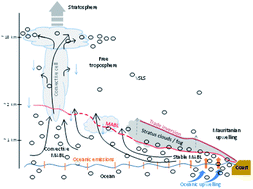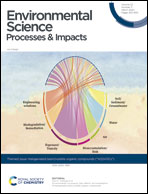Natural and anthropogenic sources of bromoform and dibromomethane in the oceanographic and biogeochemical regime of the subtropical North East Atlantic
Abstract
The organic bromine compounds bromoform (CHBr3) and dibromomethane (CH2Br2) influence tropospheric chemistry and stratospheric ozone depletion. Their atmospheric abundance is generally related to a common marine source, which is not well characterized. A cruise between the three Macaroenesian Archipelagos of Cape Verde, the Canaries and Madeira revealed that anthropogenic sources increased oceanic CHBr3 emissions significantly close to some islands, especially at the Canaries, while heterotrophic processes in the ocean increased the flux of CH2Br2 from the sea to the atmosphere in the Cape Verde region. As anthropogenic disinfection processes, which release CHBr3 in coastal areas increase, and as more CH2Br2 may be produced from increased heterotrophy in a warming, deoxygenated ocean, both sources could supply higher fractions of stratospheric bromine in the future, with yet unknown consequences for stratospheric ozone.

- This article is part of the themed collections: SDG13: Climate Action – Ozone Depletion and Halogenated (semi)volatile organic compounds (“X(S)VOCs”)


 Please wait while we load your content...
Please wait while we load your content...